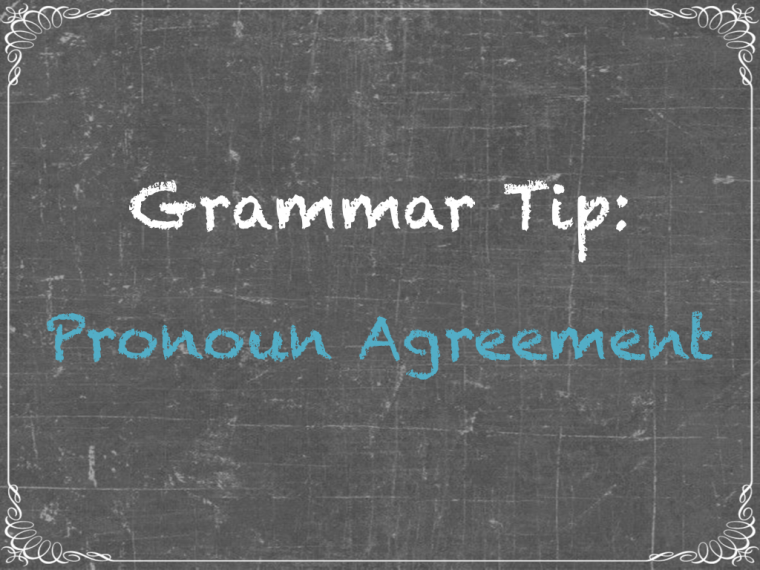Can you agree?
As you write a book or blog post keep in mind pronoun agreement. It is distracting and confusing if you keep changing pronouns. I created a four-step checklist to help you edit for pronoun antecedent agreement.
Step 1: Back To The Basics
- Personal Pronouns are he, she, it, or they etc.
- Antecedents - noun or noun phrase the pronoun is replacing
Personal pronouns must agree with their antecedent to achieve pronoun agreement.
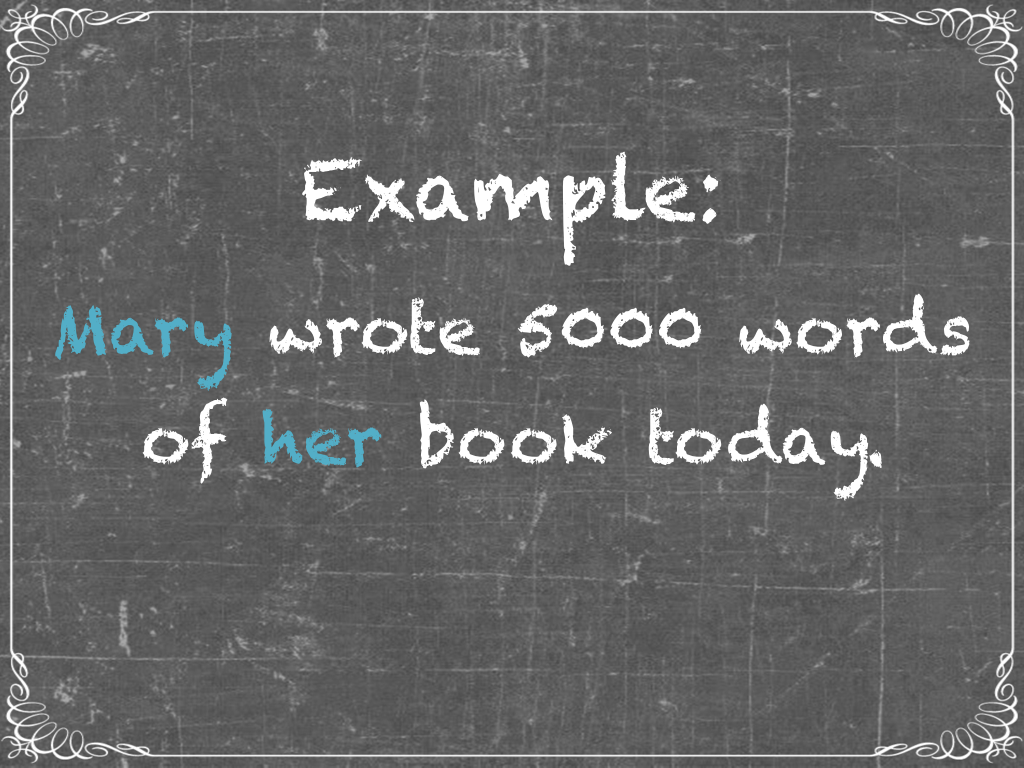
The pronoun her replaces Mary. The main reason for using pronouns is to avoid repetition. Otherwise the sentence would be, Mary wrote 5000 words of Mary's book today. You may love your friends Mary, but no one wants to hear her name repeated several times in a conversation.
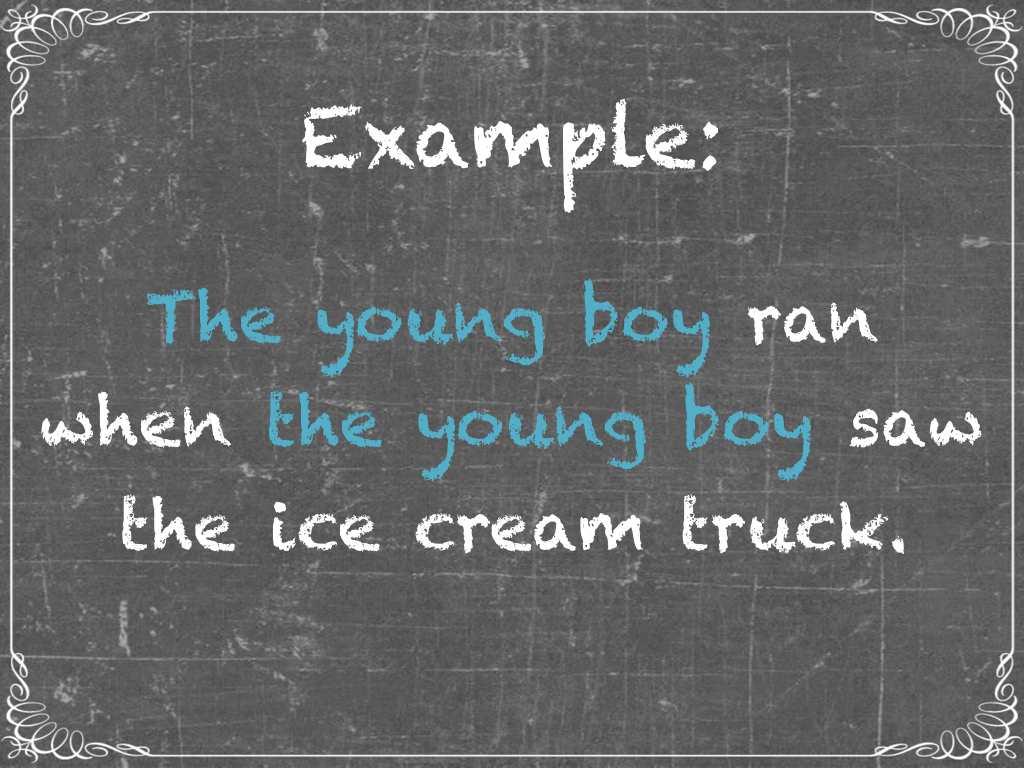
What are noun phrases?
A noun, or a phrase with a noun capable of being replaced by a pronoun.
Example A: Above
Example B: The young boy ran when the young he saw the ice cream truck.
Example C: The young boy ran when he saw the ice cream truck.
In example C, the young boy is a noun and a noun phrases. He replaces the young boy to keep from repeating yourself in writing or conversation. Plus, you may get some strange looks if you talk like the first example to most people.
Step 2: Is it singular or plural pronoun?
To accomplish pronoun agreement with antecedent you need to know the singular and plural pronoun forms.
Singular Pronouns
Plural Pronouns
he, she it
him, her, it
his, her, hers, its
himself, herself, itself
they
them
their, theirs
themselves
Do your pronouns agree? Grammar Tips From The Write Coach. #TheWriteCoach
A singular antecedent requires a singular pronoun.
A plural antecedent requires a plural pronoun.
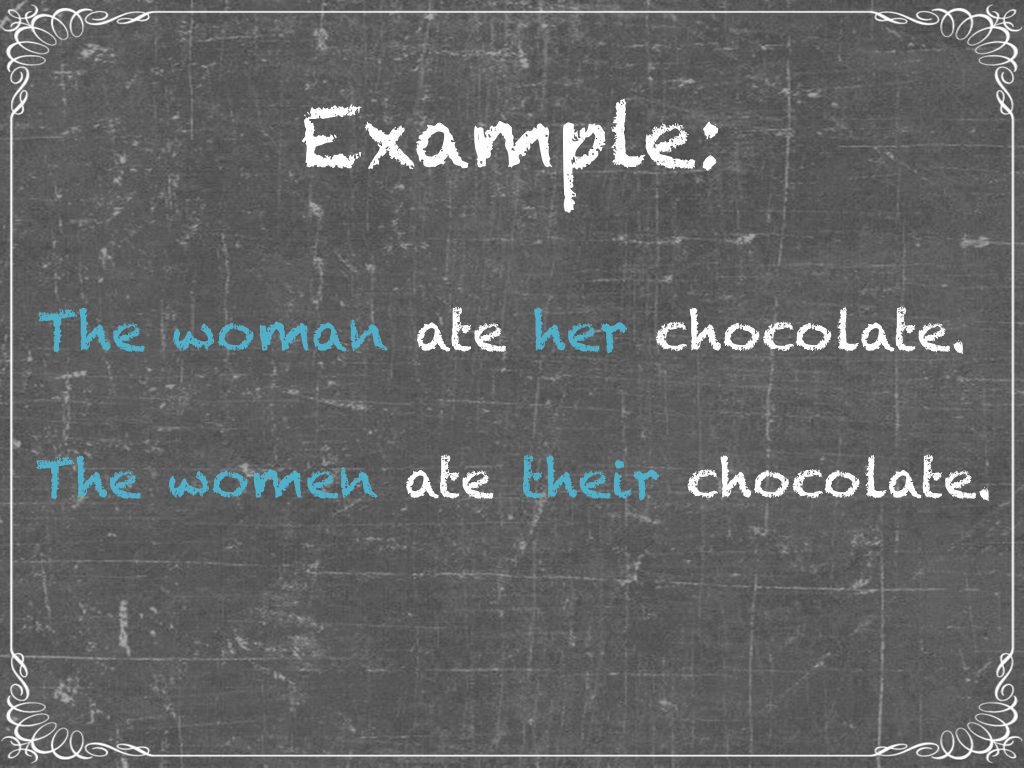
Can you tell it is Valentine's Day?
Most of the time it will be easy to know whether to use the singular or plural form.
Step 3: Pronouns agree with their antecedents in gender.
- She refers to women, girls, and female animals.
- She also is used for a few inanimate objects such as ships, countries, cars of which we are fond.
- He refers to men, boys, and male animals.
- He also refers to inanimate objects and most animals.
- For animals use he or she if you know the sex, but if you are unsure use it.
- It is used for inanimate objects, for lower animals and non-cuddly creatures, and sometimes for human infants if the sex is unknown or considered irrelevant.
"No singular 3rd person pronoun in English is universally accepted as appropriate for referring to a human when you don't want to specify sex. . . . The pronoun most widely used in such cases is they, in a secondary use that is interpreted semantically as singular." (Rodney Huddleston and Geoffrey K. Pullum, A Student's Introduction to English Grammar. Cambridge University Press, 2006)
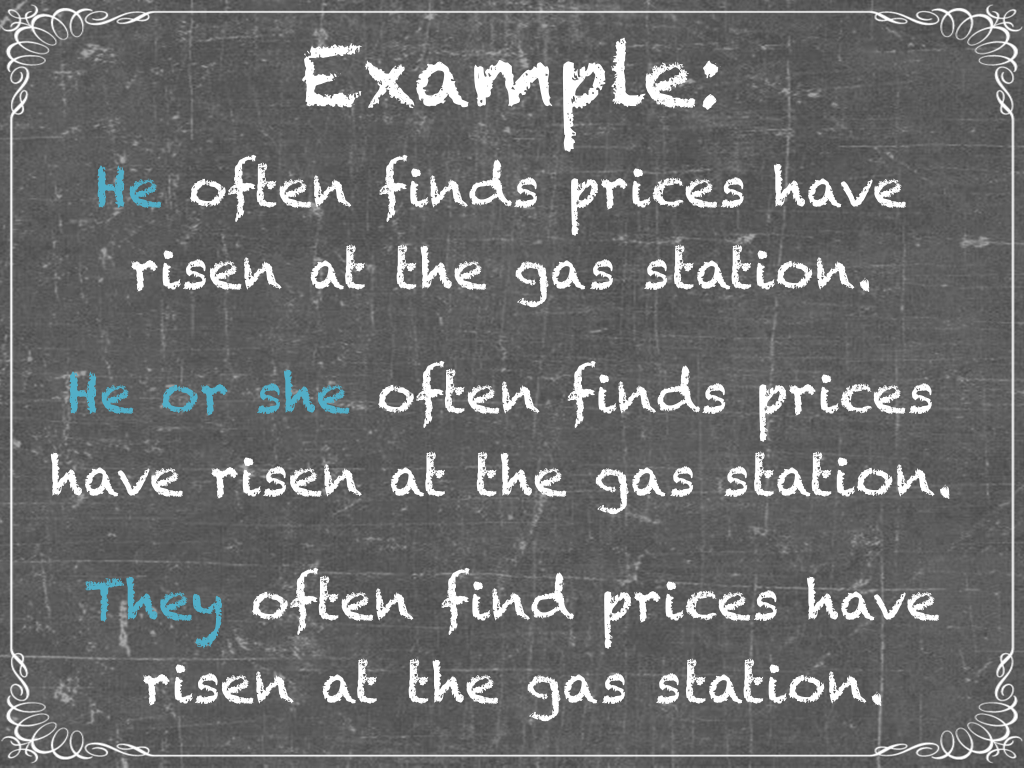
Step 4: Pronouns agree with their antecedents in number.
A singular noun and another singular noun create a plural antecedent, and together they require a plural pronoun.
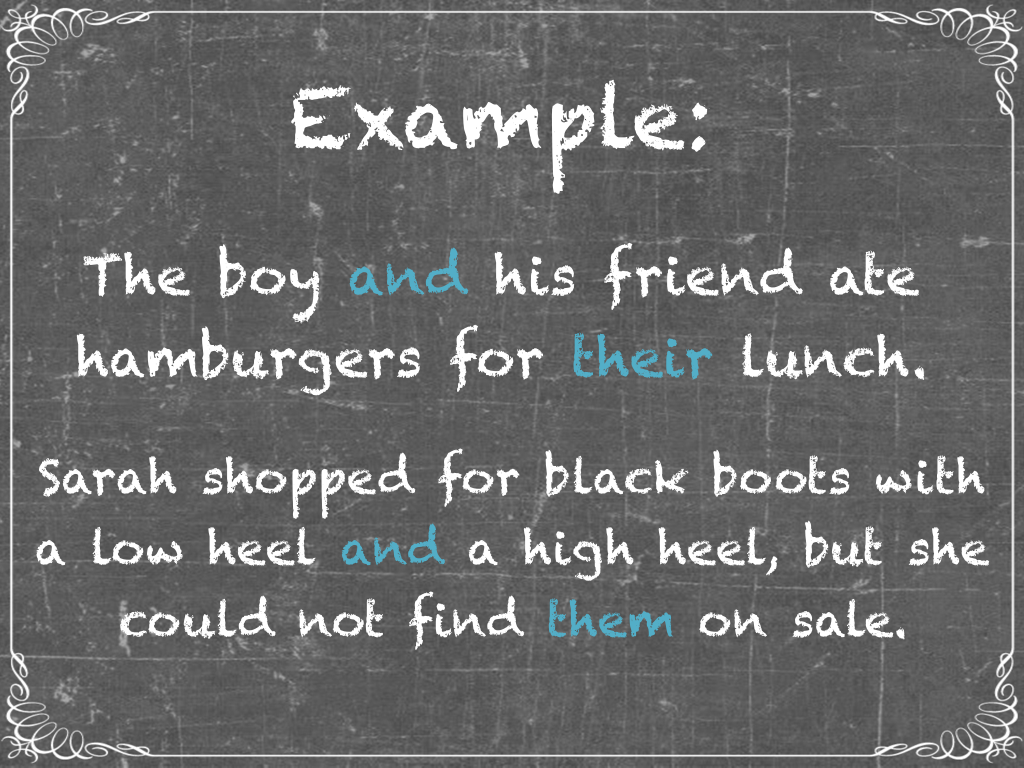
Their and them are practical choices for "the boy and his friend," and "a low heel and a high heel."
However, the English language rules are not always straight forward as in the examples above.
Two little words have mighty power over a sentence. Each and Every are singular, but can overpower the plural antecedent to become singular as well.
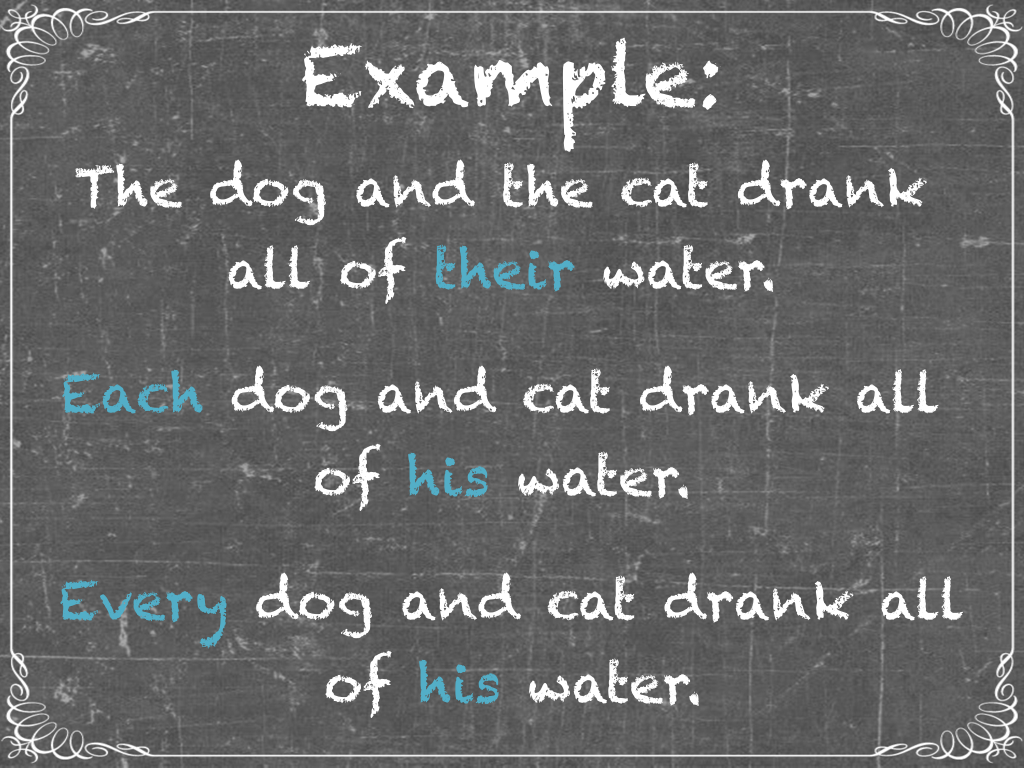
Each and Every are little trouble makers. The verbs must agree as well as the pronouns. See examples below.
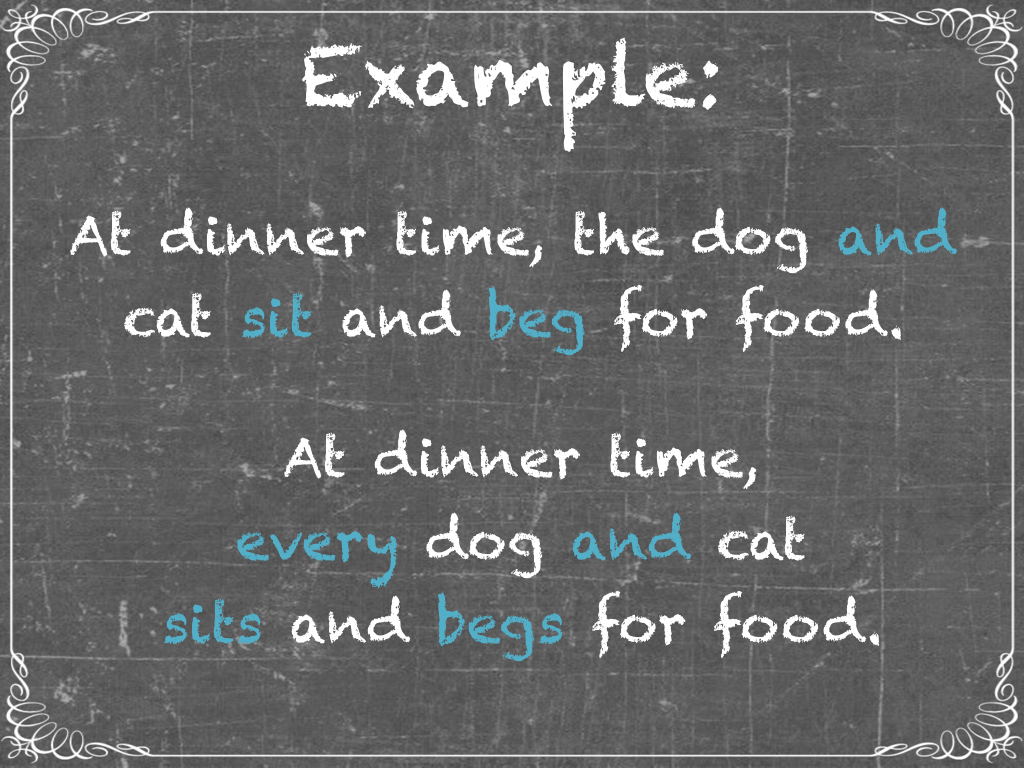
This is not a comprehensive view of pronoun agreement. I will share more in future post.
Learn more editing tips from a previous post:
After The Draft...What's Next

